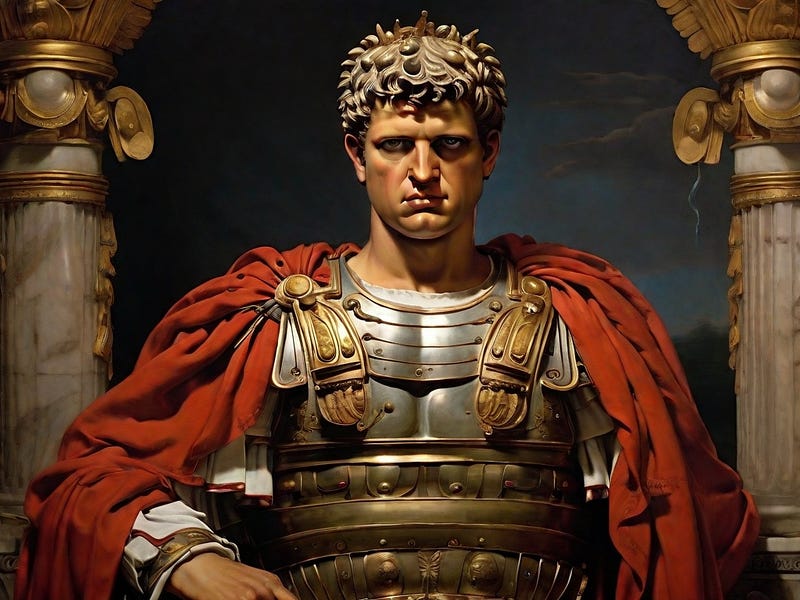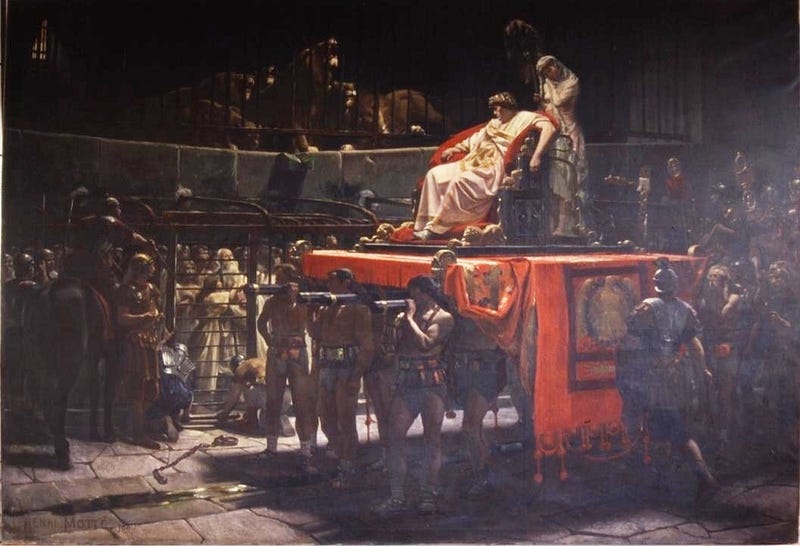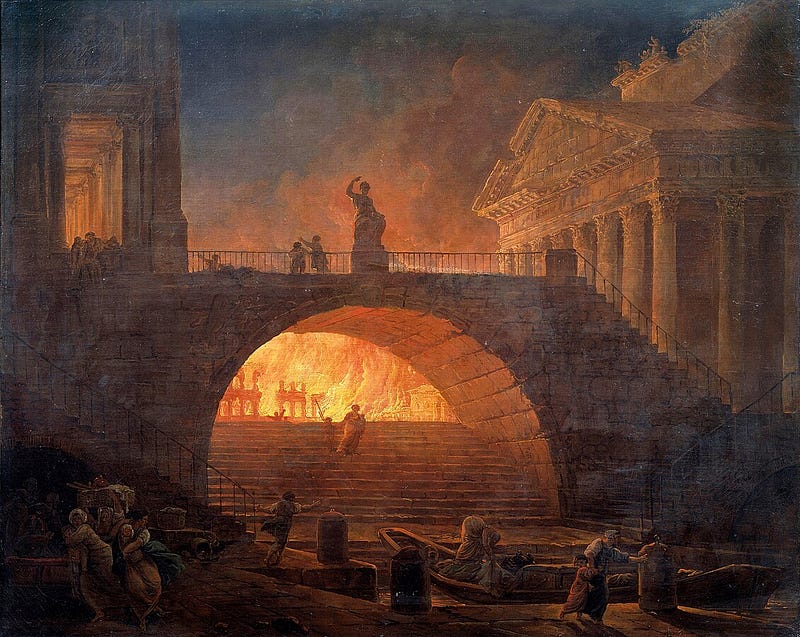Exploring the Life of Emperor Nero: Tyrant or Tragic Artist?
Written on
Chapter 1: The Enigma of Emperor Nero
Emperor Nero, often viewed as a tyrant and a public enemy, was a figure deeply reviled in Roman society. The fifth emperor of Rome and a student of Seneca the Younger, he had an affinity for poetry and theater, valuing art highly. However, beneath this artistic facade lay a ruler notorious for his persecution of early Christians and suspected of igniting the Great Fire of Rome. What drove Nero to become one of history's most despised emperors?

Ancient historians expressed strong disdain for Nero. They accused him of tarnishing the legacy of Augustus and the Julio-Claudian dynasty. Pliny the Elder labeled him a “destroyer of humanity,” and he was particularly despised by Jews and Christians alike. According to Jewish Sibylline prophecies written post the destruction of Jerusalem in 70 AD, Nero was foretold to be the one to bring down Rome and the world. In Christian narratives, he was often referred to as the Antichrist due to his severe treatment of Christians. What was it about Nero that led to such a vilified reputation?
The emperor's cruel paranoia ultimately contributed to his demise. He became the first Roman ruler to be labeled a public enemy by the Senate. But how did a ruler so passionate about the arts become the most reviled emperor in history?
Born on December 15, 37 AD, in Antium as Lucius Domitius Ahenobarbus, Nero was the son of Gnaeus Domitius Ahenobarbus and Agrippina the Younger. His father was described by ancient sources as a man of debauchery.
Suetonius, a Roman writer, detailed multiple accounts of Nero’s violent behavior. He allegedly killed a freedman for refusing to drink excessively and ran over a boy on the Appian Way. He was also accused of heinous acts such as gouging out a man's eye during a dispute and engaging in incest with his sister, Domitia Lepida. Legends suggest that after Nero's birth, Gnaeus prophesied that his child would bring ruin to the empire. He passed away when Nero was just three years old.

Nero's mother, Agrippina, married Claudius, the fourth Roman emperor, in 48 AD. She entrusted Nero to Seneca the Younger, a prominent rhetorician, writer, and philosopher, who significantly influenced him. Displaying considerable talent in poetry and performance, these artistic inclinations would later impact his governance.
Despite Claudius being the official emperor, Agrippina wielded significant power in his final years, convincing the Senate to elevate her status and ensuring her son was positioned to inherit the throne. Nero was adopted in 50 AD, and three years later, he wed Claudius's daughter, Octavia. It is widely believed that Agrippina orchestrated Claudius's poisoning to expedite her son's rise to power.
Becoming emperor at just 17 years old, Nero claimed his title in 54 AD as Nero Claudius Caesar Augustus Germanicus. Initially, he struggled against his mother’s dominance, leading to family tensions. By 59 AD, he made the fateful decision to murder Agrippina, marking the start of a brutal reign.

The influence of Poppea, Nero's lover since 58 AD, also played a role in his mother’s murder. She encouraged him to divorce Octavia, whom she later pushed him to kill. Poppea was known for her beauty and luxurious lifestyle, and she was the only woman Nero truly loved. Tragically, he ended her life in 65 AD during a fit of drunken rage while she was pregnant, an act he would come to regret deeply.

The zenith of Nero's tyranny followed the catastrophic Great Fire of Rome in 64 AD, which obliterated ten of the city’s fourteen districts. Rumors spread that Nero had ordered the fire himself, supposedly watching it unfold from his palace while playing the lyre. While some historians argue it was an accident, others, like Tacitus, claimed Nero blamed Christians for the calamity, leading to widespread persecution and horrific acts of violence against them.

The portrayal of Nero as the quintessential embodiment of evil solidified as Christianity rose to prominence. Historian Miriam T. Griffin noted in her work “Nero: The End of a Dynasty” that this perception was perpetuated by early church figures and later Christian writers. Increasing discontent among various social groups, particularly the aristocracy, culminated in rebellion. In March 68 AD, Gaius Julius Vindex initiated the first uprising against Nero’s rule. Although it was unsuccessful, it set off a chain reaction that led to his eventual downfall.
By early April 68 AD, troops in Spain declared Galba as emperor. Eutropius, a Roman historian, remarked that “the Roman world cursed him and abandoned him all at once, and the Senate declared him an enemy.” In the weeks leading to his demise, Nero found himself isolated, even betrayed by his closest allies. On June 9, he took his own life, famously uttering, “Qualis artifex pereo!” (What an artist dies in me!)
Chapter 2: The Legacy of Nero
This video explores the intriguing question: Was Nero the Antichrist? Delve into the complexities of his life and reign in this insightful discussion.
In this video, a Cambridge scholar investigates whether Nero truly was the Antichrist. This bold inquiry sheds light on historical interpretations of his reign and actions.
The Paradox of Roman Slavery: Economic Foundation and Downfall
In the ancient world, slavery was neither uncommon nor rare. However, it’s essential to understand that among all the...
Attention all readers!
As content creators on Medium.com, we face minimal compensation for our hard work. If you find value in my articles, please consider supporting me on my “Buy Me a Coffee” page. Your small contributions can make a big difference in fueling my passion for creating quality content. Thank you for your support!

